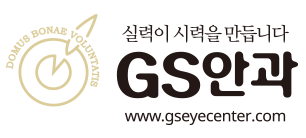ICL vs. LASIK / LASEK
Which Vision Correction Option Is Right for You?
When it comes to vision correction, three popular procedures often come up: ICL (Implantable Collamer Lens), LASIK, and LASEK. Each method offers distinct benefits, and the best choice depends on your eye condition, lifestyle, and long-term goals.
Here’s a side-by-side comparison to help you make an informed decision:
✅ ICL (Implantable Collamer Lens)
- Method: A biocompatible lens is implanted inside the eye, behind the iris and in front of the natural lens.
- Ideal For: Patients with high myopia, thin corneas, dry eyes, or those not suitable for laser eye surgery.
- Permanence: Long-term correction but removable or replaceable if needed.
- Cornea: No corneal tissue is removed or reshaped.
- Recovery Time: Fast recovery; most patients see clearly within 1–2 days.
- Dry Eye Risk: Very low
- Other Benefits: UV protection, sharper night vision, reversible procedure.
- Downsides: Higher upfront cost than LASIK/LASEK.
✅ LASIK (Laser-Assisted In Situ Keratomileusis)
- Method: A flap is created on the cornea and reshaped with a laser to correct vision.
- Ideal For: Patients with moderate to high myopia, hyperopia, or astigmatism with sufficient corneal thickness.
- Permanence: Permanent corneal reshaping
- Cornea: Involves creating a corneal flap
- Recovery Time: Quick visual recovery (within a few days)
- Dry Eye Risk: Moderate, especially in early recovery
- Other Benefits: Painless, very popular, widely available
- Downsides: Irreversible; not suitable for very thin corneas or extremely high prescriptions
✅ LASEK (Laser-Assisted Sub-Epithelial Keratectomy)
- Method: Surface laser treatment after removing the corneal epithelium (no flap)
- Ideal For: Patients with thin corneas or those involved in contact sports
- Permanence: Permanent correction
- Cornea: No flap, but surface layer is removed and regenerates
- Recovery Time: Slower recovery compared to LASIK (several days to a week)
- Dry Eye Risk: Lower than LASIK
- Other Benefits: Safer for active lifestyles
- Downsides: Longer discomfort and slower vision stabilization
Which Should You Choose?
| Factor | ICL | LASIK | LASEK |
|---|---|---|---|
| Corneal Thickness | Thin OK | Normal/Thick | Thin OK |
| Recovery Time | 1–2 days | 2–3 days | 5–7 days |
| Reversibility | Yes | No | No |
| Dry Eye Risk | Minimal | Moderate | Low |
| Activity Restrictions | Minimal | Some (initially) | Some (longer) |
| Night Vision | Excellent | Good | Good |
| UV Protection | Yes (built-in) | No | No |
| Long-Term Flexibility | High | Low | Low |
If you've been told LASIK or LASEK isn't right for you — or if you want a reversible, non-laser vision solution — ICL could be your perfect fit.
Schedule a consultation to find the best option for your eyes and lifestyle.











